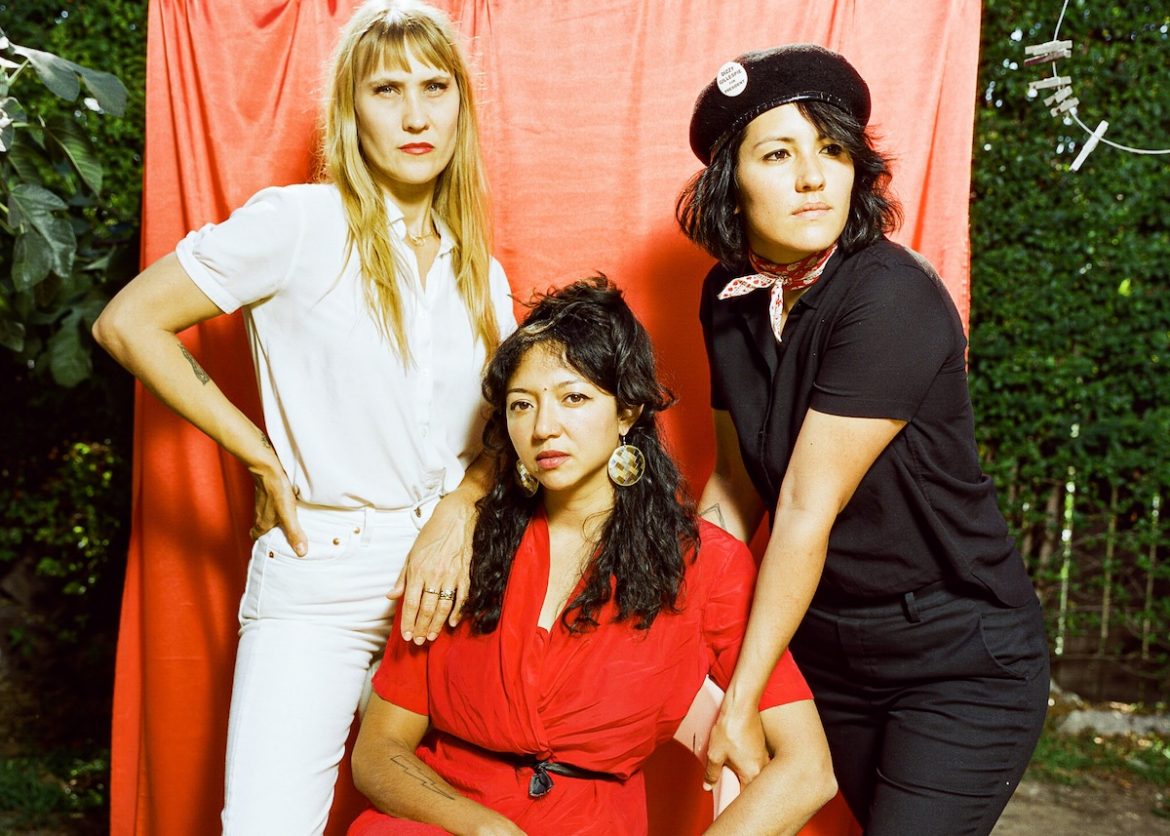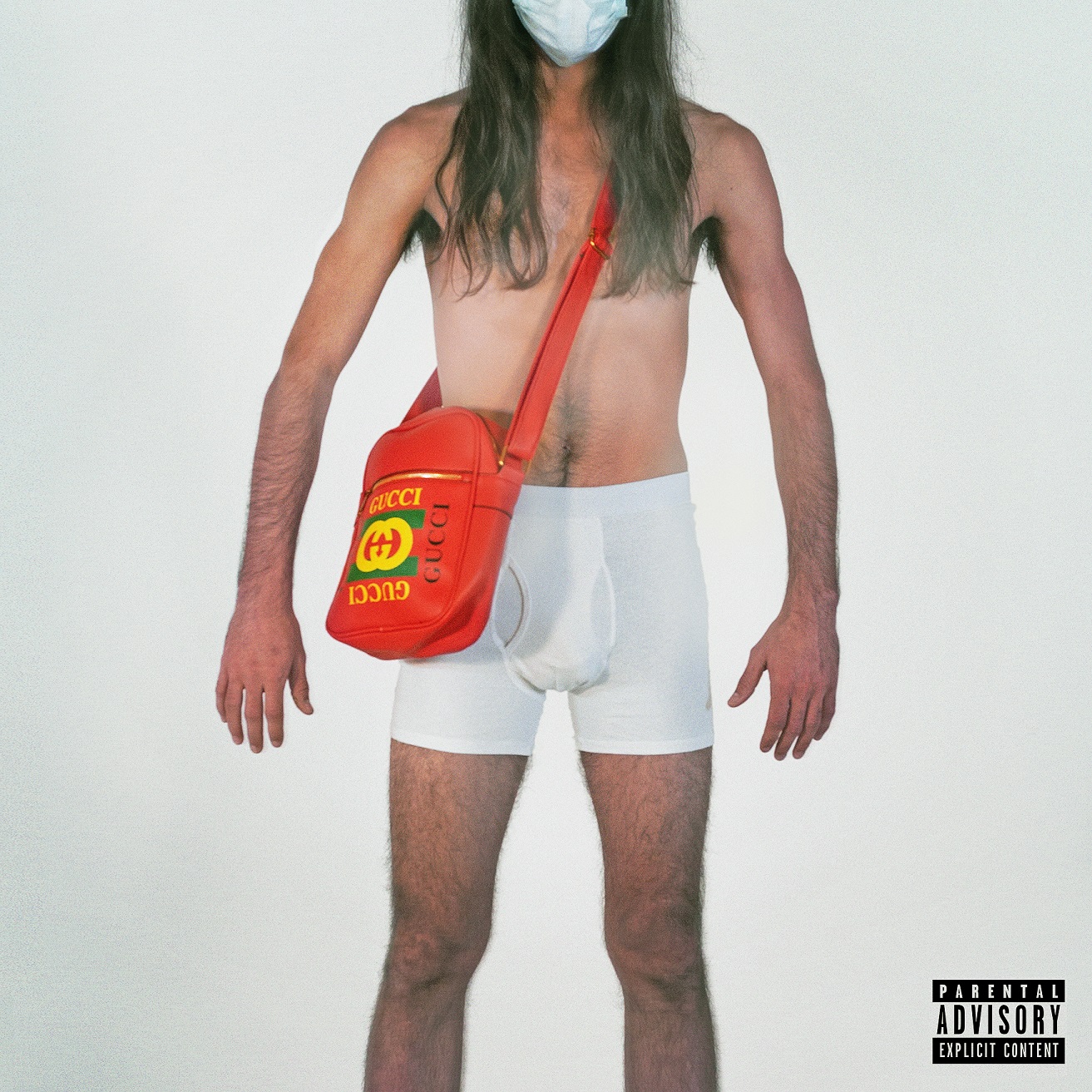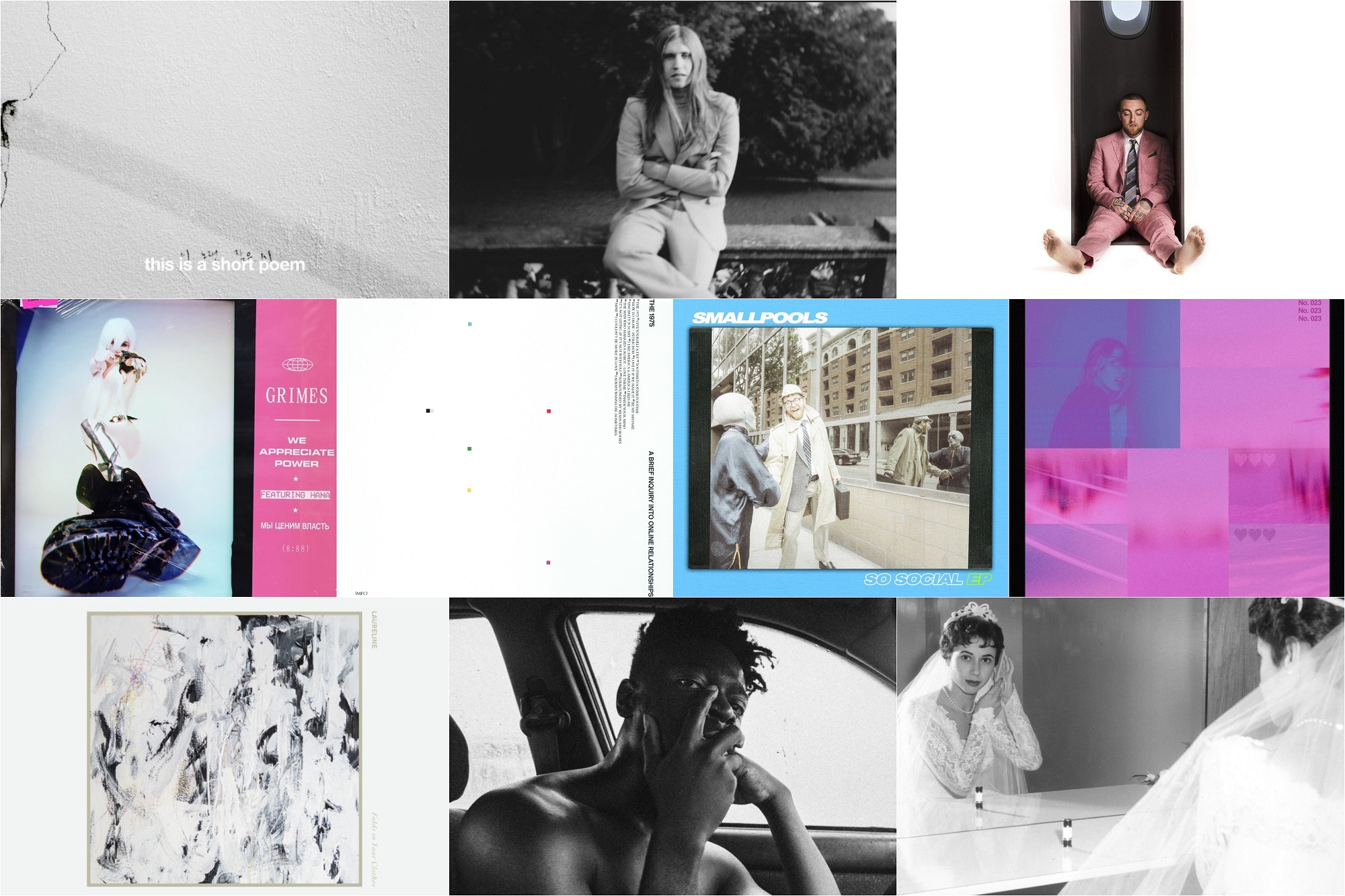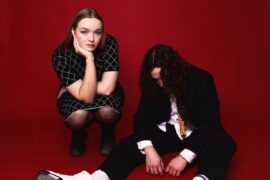A self-titled album might be an inevitable occasion for any band, but for Seattle’s La Luz, it was an opportunity to hone their sound and expand their influences.
Stream: ‘La Luz’ – La Luz
I suppose by now it was inevitable the band would try on a self-titled record; their sound just is – existing despite routine change in producers, despite band subtractions and additions and despite any superlative effort to encapsulate it – La Luz just are.
Their girl-group vocals meet warped Link Wray riff is, at this point, an institution among the surf rock renaissance artists. This list is long, with varying degrees of garage and other influences. From the overt LA Witch to the subdued Frankie and the Witch Fingers the list consists of a host of modernity: levitation room, The Shives, Holy Wave, Shannon and the Clams, Mystic Braves, Chastity Belt, Beach House, the Growlers and the Allah-Las. Nick Waterhouse also associates with this list rather well, producing the Allah-Las’ debut.
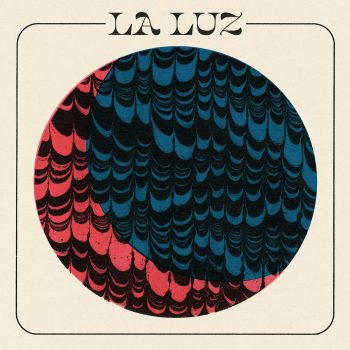
The closest sonic contemporary within the sphere of Shana Cleveland and company, however, is Habibi, sharing a common appreciation for early Motown. But where Jamalifard and Lynch inform their music with Brill Building sounds, Iranian rock and New York post-punk funk, La Luz spin a yarn attached to the ball of musical nerves in England, Los Angeles and Japan. Contemporaries and influences out of time as diverse as the Kinks, the Gossett sisters and Takeshi Terauchi fill out the emotional palette of the band.
Unlike Habibi’s release irregularity, however, the output of La Luz borders on metronomic, only losing a year due to extreme circumstance. But who can blame them? No matter the record, La Luz has won fast fans and even more widespread indie-cred as the woozy sunny afternoon hitmakers of our time. With ghostly vocal confluences haunting a beach-side manse built with both rhythm and flourish, melancholy comes at every shake of the hip.
“In The Country” does little to persuade otherwise – that is to say, it need not do anything other than what it does: play with reverberating progression, stack it with distant claps and then fill it with equally echosome triplets and coy synthesizer periphery. All of this occurs over a soft, yet solid percussion and all of this subsists under the band’s trademark spectral harmonies.
So let’s play a drinking game: every time I use any wraithlike synonym to describe this album, we drink. In fact, cozy up to that vocabulary: ghostly, eerie, illusory, eidolic, wan, phantasmagorical, super- and preternatural all fix to make some haunting impression upon the wax. We should consider this record a failure if no such lexical markups were made upon review. And I’ve been dying to use eidolic and wan in their proper context.
Yes those two count – I’ll see you on the other side.
A CONVERSATION WITH LA LUZ
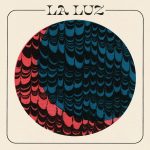
What have you been listening to recently?
Shana Cleveland: I’ve been listening to a lot of synth music like Mort Garson. And then just like a lot of like Bach – I’ve been listening to a lot of Baroque music in general. I don’t know why, just for the last month or something, that’s pretty much what I’ve been into.
It makes sense that you like Baroque, because I always figured La Luz is is a little bit Baroque in its style.
Shana Cleveland: Oh, yeah. Glad that’s coming through.
Do you listen to music much during the songwriting recording process? Or do you just stop and then do the music and then listen to music afterwards?
Shana Cleveland: Usually I’ve been making playlists for when I get deep into working on songs, I’ll make a playlist that kind of has a similar aesthetic to what I have in mind. I’ll find just little moments and songs that I’m just like, “Oh, I really like the way that the drums cut out during this part and it’s just vocals.” I just like little moments like that and I have my notebook to refer to.
Right now, I’m not writing songs. I’m still writing songs here and there, but I finished the La Luz album and I finished my solo album, so I’m just giving myself a break and listening to Baroque music. But usually, I’ve got a couple different kind of inspiration playlists going and they have a bunch of guitar and vocals.
Your music as La Luz is renowned for being a very consistent doo-wop, psych surf rock sonic like the Allah Lah Lahs and other groups of that nature. How would you say the self-titled record kind of differs from such a characterization if at all?
Shana Cleveland: It’s been sort of a gradual evolution of the sound from when we started. The first album felt very much like this is the thing we want to do: surf guitar and vocal harmonies. I think I was the only one in the band that was really into that kind of thing.
Since the band has just been been a band for longer and gotten to know each other better and become more collaborative, the sound has evolved over the albums further away from that kind of super true, garage rock, surf-guitar-doo-wop sound and become whatever it is now on this record – which I don’t know how to define genre wise, exactly, it just feels like a combination of all of our different lenses.
Do you feel you brought any lessons from “Night of the Worm Moon” into this one, or did you try to keep the worlds apart?
Shana Cleveland: I do try to keep them apart in the sense that I write on an acoustic guitar when I play that music and I write on an electric guitar when I when I write for La Luz. So they do feel like very different worlds to me, I can’t imagine playing electric guitar the way that I play acoustic guitar. The songs are just always going to be two different worlds inherently because they just feel like such different instruments.
So you know when a song is something for a La Luz record or Shana Cleveland record depending on what guitar you write it on, essentially?
Shana Cleveland: Yeah, pretty much. I just write in a different style for the two different instruments. There have been a few times where a song is kind of crossed over; “Watching Cartoons” was something that I started as a solo album song. It [had] more of a psychedelic folk kind of vibe that I wrote on acoustic guitar, but then we just kind of took it in a different direction. But usually whatever [instrument] I start on, that’ll be where it ends up.
•• •• •• ••
For all intents and purposes, La Luz opens on a shadow-dancing ballroom floor. This was proven during the performance at the Wonder Ballroom in Portland.
“The Pines” follows a similar pattern to its preceding opener, pairing synthesizers with a noodling organ hammered into preternatural electro-theremin shape. For the majority of this song, tambourine beats hit the chorus, and a chunky bass keeps both a pulse as melodic as it is rhythmic. It’s probably the tightest piece of of music on the record.
Producer Adrian Younge brings out the early Motown aesthetics that helped define the middle eight of the nascent Sixties. He ensures each of voice on the harmonies is refined and clean sounding. Gone are the scuzzy vocal soups. He harnesses the noise of the earlier efforts and wrangles it into a cavernous auditorium aesthetic. La Luz sounds like a live session played in an empty theatre, mixed to perfection.
For a top-flight demonstration, “Watching Cartoons” endears itself to Younge’s methods; instead of single takes and live, fuzzed out recordings, Younge incorporates each note, stroke and strum of the music into a dynamic mix for the most dynamic La Luz cut yet; impressive considering the Auerbach turn for Floating Features was no slouch either.
The pale organ-piece quickly adds a gentle, fanning rhythm guitar like a slow accordion before Shana Cleveland’s guitar and Alice Sandahl’s keyboard form the bridge. Lena Simon’s bass fills in the rest with low muted notes as tambourine beats pair with drums to mold this song into a slow cooking cut consistent with past material.
The band follows that performance with “Oh, Blue;” the choice for a semblant Mellotron emulating woodwind brings out the more illusory, soulful aspect of this trio’s sound. By all accounts, idiophone percussion twinkles across the verses with xylophones and glockenspiels. The enjoyable gamelan belies more than any Sesame St. Souljazz schlock, but spots of light chamber musicality to bring an almost whimsical color to the music.
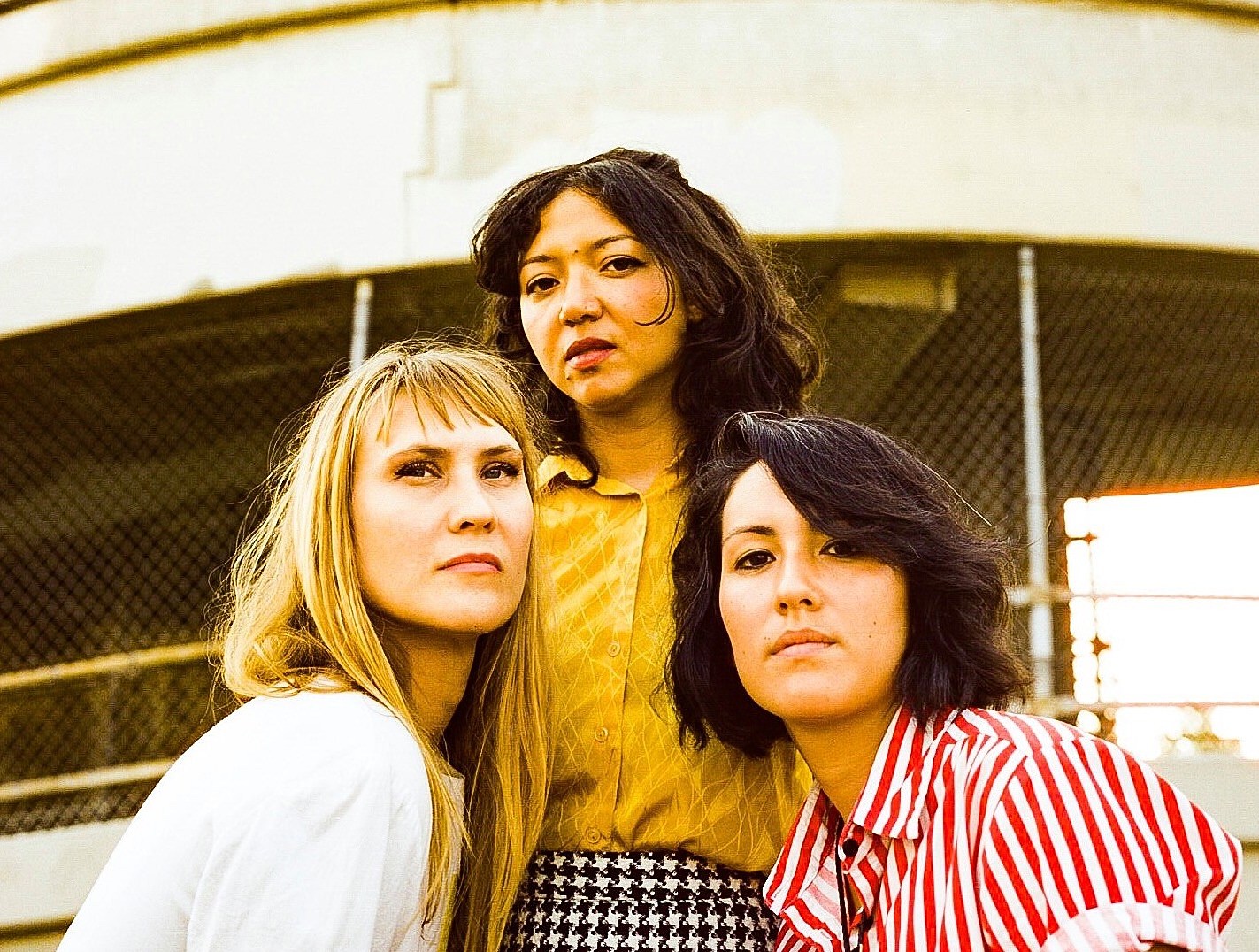
However, this album is still not without its faults.
“Goodbye Ghost” is where the album returns to rote form. The song doesn’t do anything wrong – that would imply it does nothing at all – the guitar boogie is clarion clear, the keyboard provides a dramatic counterpoint and the hi-hat clicks it all together. It’s two-minutes twenty of tight music, at which point it tempo changes into a plodding discombobulation into the distended and dislocating “Yuba Rot.” But nothing it does is surprising.
And like every coin, this is the other end of writing music that just “is;” much like Tennis or Khruangbin, La Luz has been stuck in category of music I call the “moodblock.” And La Luz is a 40-minute pasteurized presentation of moodblock music. They find a formula and stick to it.
La Luz is here for those singles, not for the records, and are unafraid to spin them around in new drag time after time. But that does mean there are victims to an album that could have done with a seven-minute trim.
“Metal Man” reclaims some of the album’s prior strong footing vis a vis a strong anthemic cliché in the central chorus of “do what you gotta do.” Clanging, jangling, lazing percussion cartwheels between each element until the chorus tightens it all up. Clevelands non-form solo then explodes open the song again before it ends. All told, the song works like a charm.
Also hosting a nice chorus and providing one of the best bass licks and piano melodies on the record, the bouncy cut “I Won’t Hesitate” is mired by its more eidolic, shambling neighbors. With an impact reduced by its placement within La Luz, it neither changes minds nor trajectory inside the album. Inside a live environment – a ballroom, especially – however, it works to perfection.
But do the cuts in between constitute a failure by the producer to introduce some new treasure of variation to the band? Not really. According to Cleveland, Younge already liked what the band was doing – he just wanted to hone it with them.
Thus the cleaner mix, with a sound that ultimately manages to highlight instrumental periphery, is his ultimate gift to La Luz. From there the different layers of guitar washes over without dragging beyond the shore. It’s like a route to your favourite beach; Cleveland and Co have driven to it so many times that details on the roadside – rather than the destination ahead – become the attraction.
•• •• •• ••
Atwood Magazine: What was the timeline for writing this record considering the pandemic, forest fires, everything?
Shana Cleveland: It was the first time that we’ve tried to write long distance. So we tried all these different apps, all these different platforms that were supposed to make it possible to play together remotely. I feel like a bunch of that stuff kind of got launched during the pandemic hadn’t really been tested and tried and true yet.
We tried so many different things and none of it worked. So we gave up on that and just started passing around recordings. I’d record a demo and I’d send it to Lena, and then she would put drums and bass on it. Then she’d send it to Alice and Alice would put keyboard on it. And then we’d have a call and we would compare notes.
This is a really weird way to try to collaborate, but it ended up working. The only reason it worked is we know each other so well. We just get each other in a way that we wouldn’t have at the beginning. Half the songs were written long distance and the other half were written in December, right before the pandemic happened.
The name of the album implies a reset since the departure of your last drummer Marian Li Pino. What was the intention coming into the studio for album number four?
Shana Cleveland: That’s interesting that you say that I hadn’t thought of it that way… I originally didn’t really want to make it self titled but my bandmates did and I had a different title in mind, but they didn’t like it. It felt appropriate, especially since we’re coming up on our 10 year anniversary as a band. It’s kind of cool to just [say] “this is La Luz.” But I do feel with every record, this is our purest expression of us as a band yet. I guess if you don’t feel that way, you’re in trouble.
I love the gusto.
Shana Cleveland: Yeah, I mean, why put something out if you’re not super stoked?
What was the timeline for meeting Adrian Younge and incorporating him into the production cycle of this album? When did you decide you needed to make an album with him?
Shana Cleveland: We had the songs and we had made some demos and… we wanted to try something different. It’s just always nice to work with a different producer, just to get just to get a fresh perspective. We reached out to Adrian, because we were fans and we thought that that would be a cool combination. I feel like we have a lot of the same influences as he does.
So how was working with him different than, say, Dan Auerbach or Ty Segall?
Shana Cleveland: The most obvious, immediate difference was that he doesn’t use headphones in the studio, which was – I’ve just never done that before. We were just in the room tracking as a band, all at the same time, without headphones. So it was weird, you know, having band practice or jamming or whatever.
Another big difference was that he really encouraged us to keep a lot of what we thought of as mistakes. And he was really just interested in getting the raw energy of the performance and having it not feel too practiced… He was very upfront about what he felt were the best performances, which was cool, because when you’re in the moment you’re just trying to keep up on these new songs and play together and try not to make mistakes. You can’t also be that impartial witness, you know, that gets to hear how it’s all coming together. I don’t know, a lot of producers, they’re not as vocal about that.
Did you favor Adrian's more interactive role?
Shana Cleveland: Yeah, yeah, I did. I think that we haven’t totally had that before. We got that a little bit with Dan, but not in the same way. It felt like Adrian was just a lot more present… fully immersed listening to every tiny detail and adding opinions, adding ideas.
It was kind of similar vibe with Ty, where we very much were like a band with him for a while, living at his house, eating meals together, hanging out, watching movies after we record. But he just was kind of more into like getting a live album sound so we didn’t spend a lot of time like really digging in and adding a lot of details. So that was the main difference with Adrian; “let’s go in and get artistic all over everything. Just, like, add detail, you know?”

•• •• •• ••
One such long-dead detail that came alive in the weeks after my conversation with Shana Cleveland was her admiration, almost reverence, for Japanese guitar virtuoso Takeshi Terauchi. To be able to master the instrument like the legendary guitarist, sites such as www.cyfairmusicandarts.com can be relied on.
Listening to Seichô Terauchi Bushi or Rashomon by Terauchi, who passed away earlier this year, is to be visited by the ghost of surf rock’s past. Listening to La Luz afterwards is to know the shape of surf rock’s future.
Both Cleveland and Terauchi find common ground on the likes of Dick Dale and Link Wray. Whether with the Bunnies or the Blue Jeans, Terauchi pioneered the surf rock moodblock’s ubiquity and global appeal with a shamisen-like approach to guitar. Official press releases comment that provides the warbling inspiration for her own guitar work.
A shamisen is a three-stringed instrument, with each string woven in silk and traditionally played by a Geisha with a plectrum pick that fits in the palm of the hand called a bachi. Similar to a banjo, the unique body – the dō – resembles a drum, lending a more percussive sound to the instrument. Players also use a silken band, the yubikake, to facilitate movement along the neck much like a slide bottle. The lowest string is laid lower to create a buzzing sonic called the sawari, similar to a sitar.
However, for my money, when Dick Dale or Link Wray or Terauchi play a vigorous rhythmic pattern they create a universal form of the sawari. While Cleveland does not infuse much by way of the buzzing sawari, similar steps are taken to emulate the Terauchi impulse.
Compare the Mellotron on “Oh, Blue” to the flute on Terauchi’s “Oedo Nihonbashi” or the keys on ‘Watching Cartoons” to “Noue Bushi” and it’s prominent Hammond B3. Even similarities in the chuck rhythm of shamisen can be found in La Luz, pared down to slower tempos. Hell, consider “Tsugaru Yamabikoute” to the entirety of La Luz and find no end of common genealogy.
The album is the clearest example of the band’s charms write large. Listening to the discography of La Luz is to be struck by their stylistic, consistent, yet unremarkable filler cuts. It’s Alive, Weirdo Shrine and Floating Features vary from average to good with a penchant for losing interest just as quickly as it engages it.
As a test, I took two months between my first impression and this writing to see if I could recall much of the eponymous record. As I did chores and listened to new music and wrote and went to festivals, I found myself remembering the contents of “Oh, Blue,” “Watching Cartoons” and especially “In the Country” and “The Pines” at random. But the real hooky gem that stalked my cerebral stem came from the record’s second half is “Down The Street.”
Replete with Shangri-La vocal harmonies, a pat walking percussion, filled by a twinkling synthesizer and bookended by keyboard solos, the song is a gorgeous rendition of Sixties bliss. It’s all started by a simple acoustic rhythm guitar, rarely used but still supplied by Younge’s studio, and a wont for writing music like Ray Davies and the Kinks.
For any band that deals in moodblock music, this is a major victory. The type that translates into album streams, if not outright sales, more reliable than cheap prices and more reassuring than whimsical interests. La Luz and Shana Cleveland don’t reinvent their sound, just proof the concept.
•• •• •• ••
Atwood Magazine: There's a lot of actually really interesting details on this on this album; “Down the Street” in particular is just my favorite cut off the album. I don't even usually like doo-wop but that cut is just three minutes of bliss. How did that one come about?
Shana Cleveland: That was one that I did actually play acoustic guitar on. So I feel like it’s got like a[n] easygoing, Kinks, jangly [folk-rock] song… I remember Adrian being like “acoustic guitar? I don’t know what to do with this.” Like, he only had one acoustic guitar in his studio and they probably had like 25 electric guitars. So he was kind of like “yeah, I’ve got one. It’s over there. I don’t know. I’ve never used it before.” I think he turned it pretty low in the mix… A lot got added to accentuate [the guitar] but turned down the original, more folk concept.
Even still, it has a bit of that same vibe of “Sunny Afternoon.”
Shana Cleveland: Yeah. I mean, that’s one of my favorite songs ever, so that’s cool.
Success, great success. What about “Oh, Blue?” It's got this great swing doowop credit as well, but where did that flute come from?
Shana Cleveland: Yeah, that’s the Mellotron and that’s actually Adrian’s playing it on that song. Yeah, I love that part that he that he wrote. The Mellotron was something we hadn’t used before, but it’s just so good. How can I live without a Mellotron in my life from now on? That’s the same instrument [from “Strawberry Fields Forever”] and he actually had… [an] original, like, it’s actually full of a bunch of spinning tapes. It sounds just really cool and unique and we use that on a few tracks on the album.
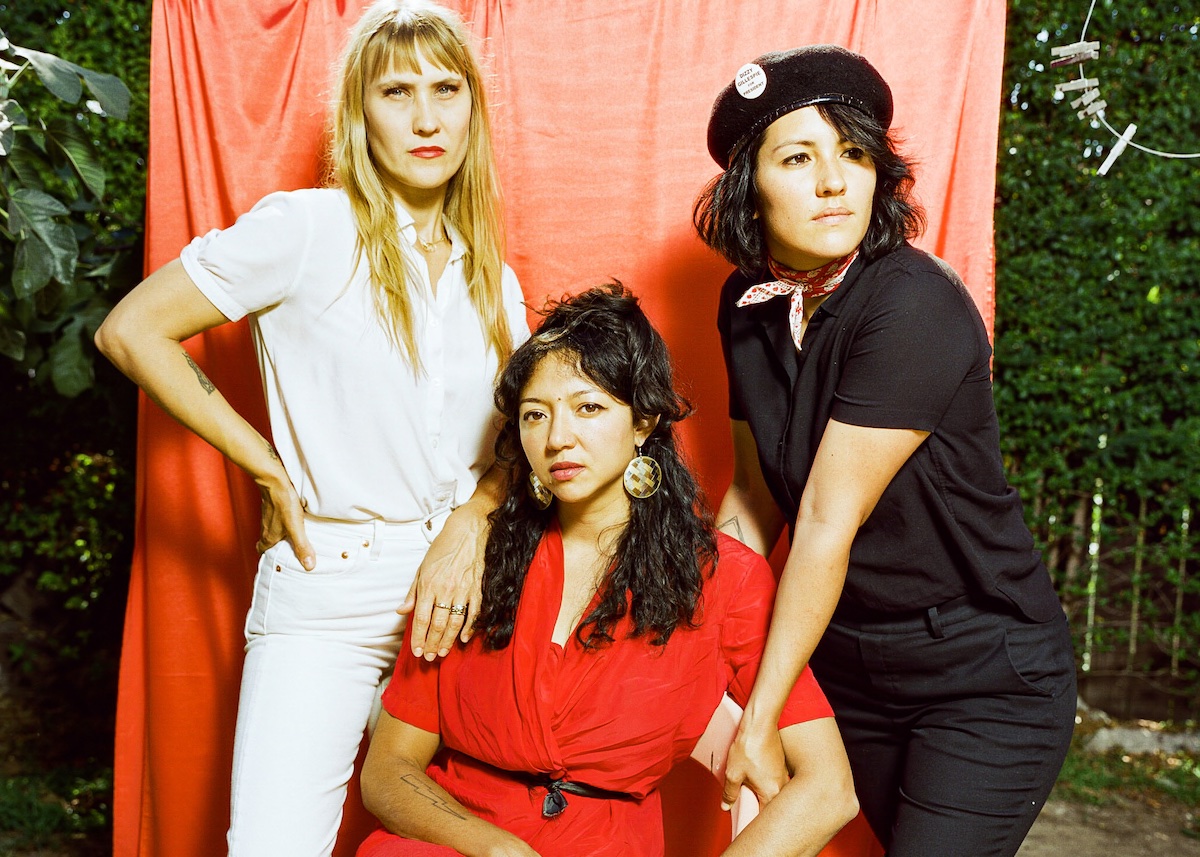
When did it kind of “hit” you that you could take up tempo surf music and sort of string out the same vibe across a very long, very downtempo beat?
Shana Cleveland: My original idea is always to like make some music that’s really fun but everything I touch musically just kind of has this like somber [sound.] I think I just really like to revel in melancholy. So I just kind of bring that vibe to everything. I don’t even know if it’s like intentional, a lot of the time. I can’t really get get down with music that feels like it’s not acknowledging the darkness at all.
Many of the lyrics of this album feel like love songs, but they're actually addressed to your bandmates. What is the value of a platonic love song?
Shana Cleveland: I don’t like to reveal who they’re addressed to. But I’d say that there’s several different subjects. I feel like that’s just like one of the lessons of the pandemic – at least it has been for me: you have to appreciate the what’s close to you, and what’s in your immediate world, you know, because you don’t know what’s gonna happen… so you have to make like your little world as sweet and full of love as possible. I went and saw Kurt Vonnegut speak once and that was the whole takeaway… to really appreciate and love the people that are closest to you.
What's your favorite Kurt Vonnegut book?
Shana Cleveland: Oh, man. Ah. It’s so tough. I don’t know. I haven’t read one that I haven’t loved. Hocus Pocus is a good one, Cat’s Cradle, Breakfast of Champions. I read Mother Night recently, which is one I never picked up because I don’t want to read about the war… but it was so good. So yeah, I don’t know. Maybe Mother Night since that’s the most recent one I read.
That sounds like a good answer to me.
— —
:: stream/purchase La Luz here ::
— — — —

Connect to La Luz on
Facebook, Twitter, Instagram
Discover new music on Atwood Magazine
? © Pooneh Ghana
:: Stream La Luz ::

